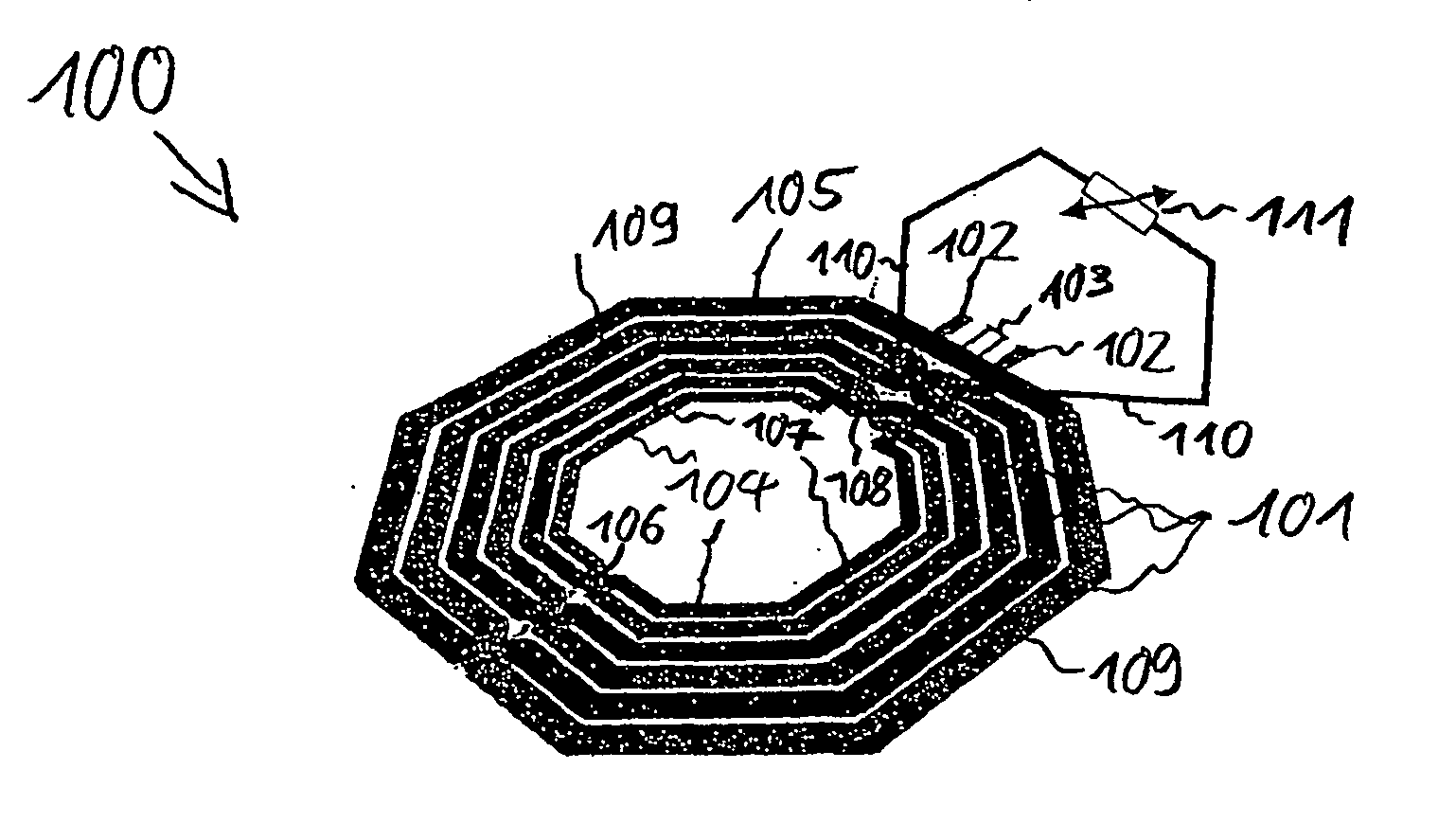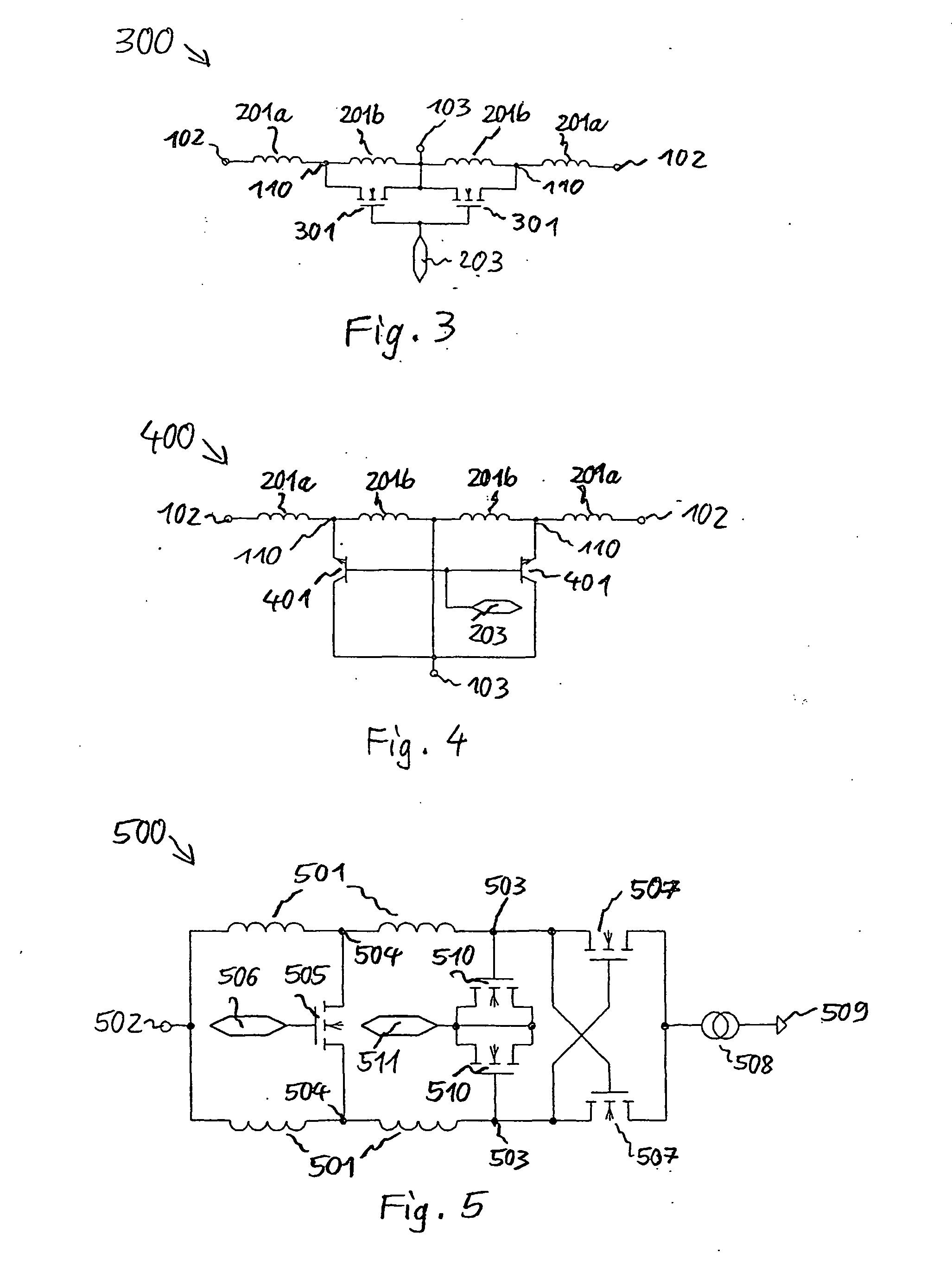Inductive component
a technology of inductive components and switching elements, which is applied in the direction of transformers/inductances, inductances, and continuous variable inductances/transformers, which can solve the problems of reducing the standby time or the operating time of the mobile radio device, the power of the voltage controlled oscillator is considerably impaired by the switching element, and the switching element's low series resistance is usually very large, so as to achieve hardly increase the series resistance and alter the effective inductan
- Summary
- Abstract
- Description
- Claims
- Application Information
AI Technical Summary
Benefits of technology
Problems solved by technology
Method used
Image
Examples
Embodiment Construction
[0033]FIG. 1 shows a diagrammatic plan view of a fully differential coil 100 in accordance with a first exemplary embodiment of the invention.
[0034] The fully differential coil 100 in accordance with the first exemplary embodiment of the invention has a spiral arrangement of turns 101 which lie essentially in one plane. In accordance with the first exemplary embodiment, the turns 101 are metallic conductor tracks arranged in a metallization plane on a semiconductor substrate, in order to be able to integrate the fully differential coil 100 into an integrated circuit. Consequently, the metallization plane used for the turns 101 represents the turns plane. Furthermore, the fully differential coil 100 has two end connections 102 and a center connection 103. The total inductance of the fully differential coil 100 can be tapped off between the two end connections 102 while half the total inductance of the fully differential coil 100 can be tapped between one end connection 102 and the c...
PUM
| Property | Measurement | Unit |
|---|---|---|
| frequency | aaaaa | aaaaa |
| oscillation frequency | aaaaa | aaaaa |
| oscillation frequency | aaaaa | aaaaa |
Abstract
Description
Claims
Application Information
 Login to View More
Login to View More - R&D
- Intellectual Property
- Life Sciences
- Materials
- Tech Scout
- Unparalleled Data Quality
- Higher Quality Content
- 60% Fewer Hallucinations
Browse by: Latest US Patents, China's latest patents, Technical Efficacy Thesaurus, Application Domain, Technology Topic, Popular Technical Reports.
© 2025 PatSnap. All rights reserved.Legal|Privacy policy|Modern Slavery Act Transparency Statement|Sitemap|About US| Contact US: help@patsnap.com



